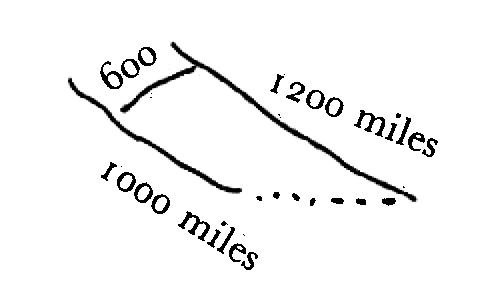To Charles Lyell [19 December 1837]
My dear Lyell
I cannot say what are the southern or northern limits of true coral islands in Pacific, for scacely any islands occur south or north of the Tropic.— Bermuda in Lat 33o 1/2. is an exception to general rule owing to Gulf Stream— Coral is abundant at Mauritius on Tropic & I believe at Loo Choo1 a little north of T of Cancer (that is 23o 30’) It will be difficult for you to talk of great areas abounding with corals.— People’s ideas of the Pacific are most false. — In the thick archipelagoes—in a long days sail, you will often only see one or two islands. The Dangerous Archipelago2 is (speaking very roughly & accuracy cannot be obtained in such a point) is an oblong of 1200 miles in length, by 300 or 400 in breadth, which is thickly strewed with lagoon Isld. But mind I use the word thickly, as before cautioned, that is with reference to the immense open ocean of the Pacific.— Again The Radack3 & Ralix4 islands, together with the Kingsmill islands, may be similarly included by 1100×200 or 300 miles.— The Maladive & Laccadive will offer you another example.— A NW by W linear area of a length of between 4000 & 5000 (& of breadth of from 200 to 400 miles) including the Dangerous Arch: & the Radack Arch., the Letilia group & many other scattered islands, I believe, includes nothing but lagoon island.— But then there are spaces of some hundred miles without an island of any kind.—
The sea proposed by Flinders5 to be called the Corallian Sea, is bounded on East & West by Australian Barrier, & the great reefs of New Caledonia, & to the N. by the reefs of Louisiade.— This area thus surrounded on 3 sides by coral & containing a few reefs is about,— the dimension here given.—

But then the land to which these reefs are attached is primary.—6 I fear this information will scarcely be of any service to you; but it is the best I can give.—7 Many thanks for the books.— I am afraid I shall not be able to read them for nearly a week, as I have not finished E. de B.—8
Yours very truly, C Darwin—
Tuesday Night.
With respect to your E & W. Boundary of coral in the Pacific, it is scarcely possible to give any satisfactory answer for the two great areas, the Dangerous or Low Archipelago, and the Corallian sea are separated by great volcanic band, in which coral exists in very small quantity, or is entirely absent.—
Footnotes
Bibliography
Lyell, Charles. 1838. Elements of geology. London: John Murray.
Summary
Responds to Lyell’s query [missing] about northern and southern limits of coral islands of the Pacific. Warns that coral islands are much more thinly distributed than people realise and cites examples. Comments on views of Matthew Flinders. Reading work of É[lie] de B[eaumont]. Notes difficulty of setting an east-west boundary to coral islands.
Letter details
- Letter no.
- DCP-LETT-394
- From
- Charles Robert Darwin
- To
- Charles Lyell, 1st baronet
- Sent from
- London, Gt Marlborough St, 36
- Postmark
- DE 20 1837
- Source of text
- American Philosophical Society (Mss.B.D25.9)
- Physical description
- ALS 4pp
Please cite as
Darwin Correspondence Project, “Letter no. 394,” accessed on 23 April 2024, https://www.darwinproject.ac.uk/letter/?docId=letters/DCP-LETT-394.xml
Also published in The Correspondence of Charles Darwin, vol. 2


